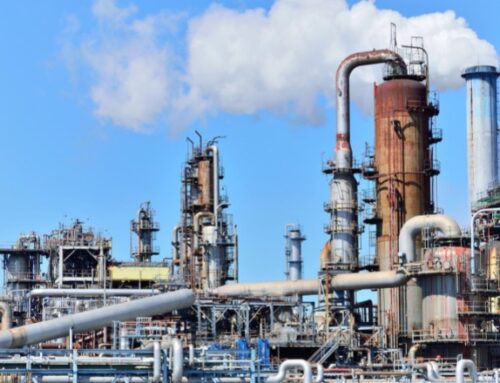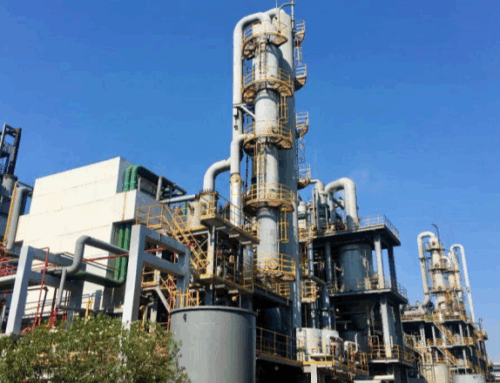In the context of increasingly severe energy and environmental challenges today, finding sustainable methods for ethylene production has become an important global research topic. The research team at the University of Michigan has brought a remarkable innovation – an “artificial leaf” that can convert carbon dioxide into plastic raw material ethylene, bringing new hope to ethylene production while also challenging traditional processes.
Ⅰ The Challenges and Difficulties of Traditional Ethylene Production Process
Ethylene, as an important chemical raw material, has a wide range of applications in modern industry. However, traditional ethylene production processes face many problems.
At present, China mainly relies on tube furnace steam cracking technology to produce ethylene. The production of ethylene by steam cracking process accounts for about 80% of the total ethylene production capacity and is the mainstream process for ethylene production in China. But this technology is limited by unreasonable raw material structure and high process energy consumption. For example, steam cracking requires high temperature and pressure, consuming a large amount of energy while also emitting a large amount of carbon dioxide.

MTO technology, as an important supplementary technology for domestic ethylene production, has made great progress, accounting for about 17% of the total ethylene production capacity. However, with the increasing environmental requirements, coupled with low oil prices and factors such as the low ethylene/propylene ratio of the technology itself, the development of this technology has been affected.
Ⅱ Innovation Breakthrough of the University of Michigan Team
1. The magic of “artificial leaves”
Researchers at the University of Michigan have developed an artificial photosynthesis system that can combine two carbon atoms into hydrocarbons with unprecedented performance, particularly efficiently converting carbon dioxide and water into ethylene.
The device absorbs light through two types of semiconductors: one is a forest of gallium nitride nanowires, each only 50 nanometers (a few hundred atoms) wide; Another type is silicon substrate, on which these nanowires are grown. The reaction of converting water and carbon dioxide into ethylene occurs on copper clusters on nanowires, each with approximately 30 atoms.
2. Key mechanisms for efficient ethylene production
(1)Light driven reaction
Immerse the nanowires in water rich in carbon dioxide and expose them to sunlight equivalent to noon. Light energy releases electrons, causing water near the surface of gallium nitride nanowires to split apart. This not only generates hydrogen gas for the ethylene reaction, but also oxygen gas, which gallium nitride absorbs and transforms into gallium nitride oxide.
(2)Catalytic effect of copper clusters
Copper is good at capturing hydrogen and capturing carbon in carbon dioxide, converting it into carbon monoxide. In the case of mixed hydrogen and light energy injection, two carbon monoxide molecules combine with hydrogen. It is believed that the reaction occurs at the interface between copper and gallium nitride oxide, where two oxygen atoms are stripped and replaced by three hydrogen atoms in the decomposed water.
(3)Synergistic effect and self-healing
The research team found that 61% of the free electrons generated by semiconductors under light are involved in the reaction to produce ethylene. This is partly due to the synergistic relationship between gallium nitride and water splitting processes: the addition of oxygen improves the catalyst and achieves a self-healing process. The lifespan limit of this device will be explored in future work. The production rate of ethylene by this device is more than four times higher than the closest competing system.
Ⅲ Innovative production technologies for ethylene are constantly emerging
In addition to the “artificial leaf” technology developed by the University of Michigan team, there are currently other innovative ethylene production technologies emerging.
1. Biocatalytic technology
Researchers are exploring the use of biocatalysts to produce ethylene. Some microorganisms have the ability to convert specific substrates into ethylene. Through genetic engineering technology, these microorganisms can be modified to improve their ethylene production efficiency. Biocatalytic technology has the advantages of mild reaction conditions and environmental friendliness, but it still faces problems such as low yield and insufficient catalyst stability.
Case 1: A research institution conducted ethylene production experiments using genetically engineered microorganisms in a specific fermentation tank. By optimizing fermentation conditions and microbial gene expression, the production of ethylene has been successfully increased. Although the current output cannot be compared with traditional craftsmanship, it provides new ideas for future development.

2. Electrochemical synthesis technology
Electrochemical synthesis of ethylene is an emerging technology. By applying specific voltage and current on the electrode, it is possible to promote the reaction of raw materials such as carbon dioxide and water to produce ethylene. This technology has the advantages of simple operation and strong controllability, but it needs to address issues such as the stability and selectivity of electrode materials.
Case 2: An innovative enterprise has developed a new electrochemical synthesis device that utilizes electricity generated from renewable energy sources for ethylene production. The device has demonstrated high efficiency and selectivity during the laboratory stage, and is currently undergoing pilot scale testing with the potential for commercial application in the future.

3. Plasma technology
Plasma technology has also been applied in ethylene production. In a plasma environment, raw material molecules can be excited and activated, making it easier for reactions to occur and generate ethylene. Plasma technology has the advantages of fast reaction speed and no need for high temperature and high pressure, but it is still in the laboratory research stage and further optimization of process parameters and improvement of yield are needed.
Case 3: A research team from a certain university successfully synthesized ethylene in the laboratory using plasma technology. They increased the yield of ethylene by adjusting the parameters of the plasma and the ratio of raw materials. Although further research is needed, it provides a new possibility for ethylene production.
Ⅳ The broad prospects of innovative catalysts to assist ethylene production
1. Significant performance advantage
This breakthrough system produces ethylene with much higher efficiency, yield, and lifespan than other artificial photosynthesis systems. Compared with another catalyst based on silver and copper, although it can achieve similar efficiency of about 50%, it needs to operate in a carbon based liquid and can only degrade after a few hours of operation. In contrast, the Michigan team’s equipment ran for 116 hours without slowing down, while the team’s similar equipment has run for 3000 hours.
2. Future application directions
The long-term goal of the team is to string longer chains of carbon and hydrogen atoms together to produce liquid fuels that are easy to transport. For example, in the future, three carbon propanol or other liquid products can be produced. Liquid fuels can enable many existing transportation technologies to achieve sustainable development, which is also the ultimate goal of the University of Michigan team.

Ⅴ Future prospects of new technologies for ethylene production
1. Multi technology collaborative development
The newly developed ethylene production technologies currently have their unique advantages, but also face some challenges. For example, although the technology of methane oxidative coupling to produce ethylene has attracted widespread attention, the stability of the catalyst and the design of the reactor are still key issues; There is still a lot of room for improvement in the conversion rate of ethane and ethylene selectivity in the technology of ethane oxidation dehydrogenation to produce ethylene; The direct production of ethylene from synthesis gas requires a better balance between the reaction performance of composite catalysts and process operating conditions. I believe that on the basis of significant advances in catalytic science and engineering, process intensification, and other fields, these technologies can be synergistically developed to provide more choices for ethylene production.
2. The inevitable trend of sustainable development
With the continuous improvement of environmental protection requirements, sustainable and economical production of ethylene is both an urgent challenge and an exciting opportunity. The “artificial leaf” technology developed by the University of Michigan team provides a new sustainable approach for ethylene production, which is expected to reduce dependence on traditional fossil fuels and lower carbon dioxide emissions. Meanwhile, the continuous development of other new technologies will also drive ethylene production towards a more environmentally friendly and efficient direction.
In summary, the innovative achievements of the University of Michigan team have brought new hope to ethylene production and challenged traditional processes. In the future, with the continuous advancement of technology, new technologies for ethylene production will continue to emerge, making greater contributions to meeting the global demand for ethylene and achieving sustainable development.
Article source: www.xianjichina.com
M&J International Trading Co., Ltd





